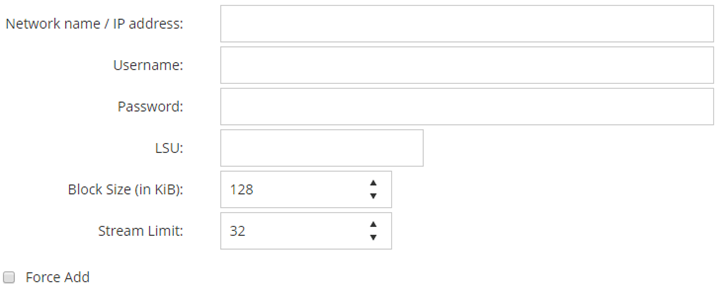About EMC Data Domain Systems
The DD Boost software includes two components:
|
• |
DD Boost Library: This component runs on the NetVault Server, and provides the interface to communicate with the DD Boost Server running on the Data Domain system. |
|
• |
DD Boost Server: This component runs on the Data Domain systems. |
DD Boost offers the following features:
|
• |
Distributed segment processing: DD Boost offloads parts of the deduplication process to the backup client or server, enabling the client or server to send only unique data segments to the Data Domain system. |
|
• |
Advanced load balancing and link failover: This feature lets you combine multiple Ethernet links into a group, and register a single interface with the backup application. The Data Domain system automatically balances the load for backup and restore jobs on multiple interfaces, and routes the jobs to the available interfaces if one of the interfaces in the group goes down. |
|
• |
File replication: File-level replication enables transfer of deduplicated data directly between two or more DD Boost-enabled Data Domain systems, and thus reduces WAN bandwidth requirement by up to 99 percent. The Data Domain systems create and transfer the duplicate copies without using any resources on the backup server. |
Data Domain System prerequisites
|
• |
Install DD Boost license on the Data Domain System: To use a Data Domain system for backups and restores, install the required DD Boost license and enable DD Boost on the Data Domain systems. |
|
• |
Create a DD Boost user account: On the Data Domain system, create a DD Boost user account that can be used to log on to the device for backups and restores. |
|
• |
Configure the required DD Boost features: On the Data Domain system, configure the features that you want to use. For more information about enabling and configuring DD Boost features, see the DD Boost section in the DD OS Administration Guide. |
|
• |
Open the required firewall ports: To perform DD Boost backups and replication across a firewall, open the following ports on the Data Domain system: |
|
• |
Install Microsoft Visual C++ 2005 SP1 Redistributable Package on Windows: Install the Microsoft Visual C++ 2005 SP1 Redistributable Package on Windows-based NetVault Server. This requirement applies to all supported Windows platforms. The DD Boost library fails to load if you do not install this package on Windows. |
|
• |
Configure network time-outs: Backup and restore jobs often take a long time to complete. Although the DD Boost Library can recover from temporary network interruptions, the operating system on the data protection application system might terminate a job prematurely if the data protection application time-outs are set too low. To avoid this, Data Domain recommends setting time-outs to at least 30 minutes (1800 seconds). |
Adding a Data Domain System
|
1 |
In the Navigation pane, click Guided Configuration, and then on the NetVault Configuration Wizard page, click Add Storage Devices. |
|
2 |
|
3 |
On the Add EMC DDBoost Storage page, provide the following details. |
|
Type the Fully Qualified Domain Name (FQDN) or IP address of the Data Domain system. If the server is unable to resolve the host name, it fails to add the device. | |
|
Each Data Domain system added to NetVault represents a container. | |
|
You can set the soft stream limit to any value between 1 and 256. | |
|
If the device is already added to another NetVault Server with the same name, select the Force Add check box. This option can be useful if you have performed a disaster recovery to rebuild the NetVault Server. |
|
4 |
Click Next to add the device. |
|
NetVault writes the data transfer statistics for Data Domain Systems to the stats.stnz file. The nvstatsmngr process uses this file and requires that it is regularly updated. However, frequent updates can have a significant performance impact on the system. By default, NetVault updates the file after every 5 seconds or 10 blocks of data transfer. You can change this default setting from the Change Settings page. For more information, see Configuring transfer update settings for foreign RAS devices. |
DD Boost commands
This section provides a brief description of the DD Boost commands that you can use to manage the DD Boost features on a Data Domain system. For a detailed description of these commands, see the DD Boost section in the DD OS Administration Guide. For information about configuring DD Boost from the graphical-user interface-based Enterprise Manager, see the DD OS Administration Guide.

